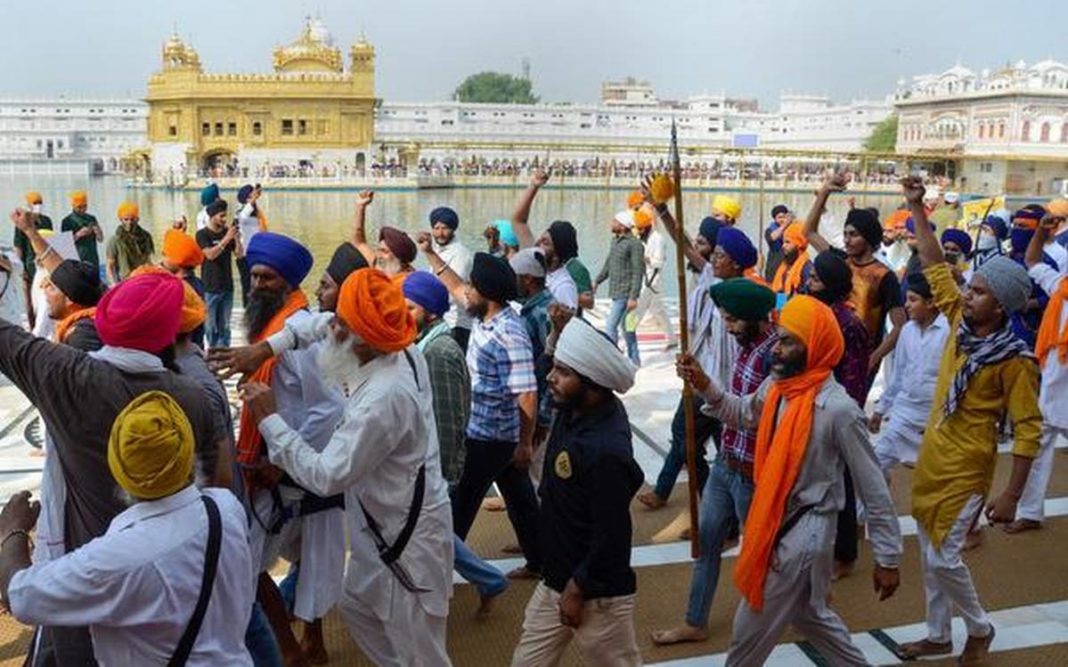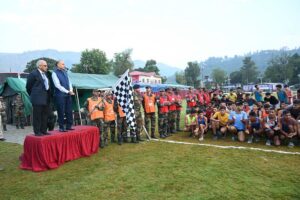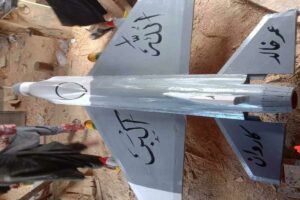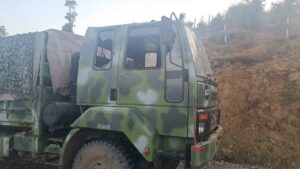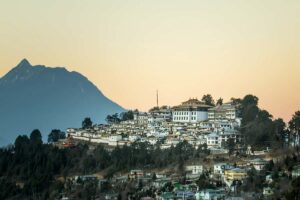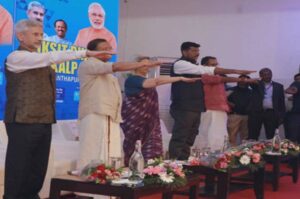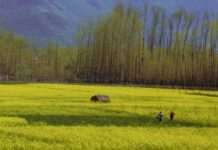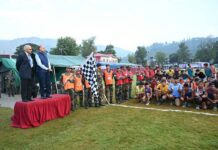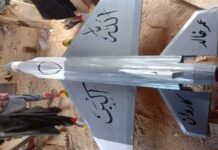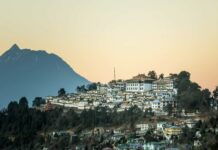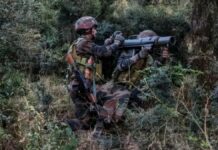Estimated reading time: 7 minutes
This January, a video of a bike rally replete with flags of Khalistan, pro-Khalistan slogans and brandishing of swords was in circulation on social media. It was claimed that the incident took place during PM Modi’s Punjab visit on January 5 during which his route was found to be blocked in Ferozepur. Pratik Sinha sought to argue that the rally was taken out 10 days earlier. It does not matter that the rally did not coincide with the PM’s visit. The pro-Khalistan slogans therein and the brandishing of weapons is in itself a very serious matter. That they could dare to do so on a public road is an affront to the nation.
Pro-Khalistan and anti-government slogans have been raised several times at the Golden Temple on the anniversary of the Operation Blue Star. In 2021, supporters of the Shiromani Akali Dal (Mann) raised pro-Khalistan slogans at the Golden Temple—a large number of young people carried banners and placards of “Khalistan Zindabad”. They had brandished swords and clashed with the SGPC task force in 2019.
In February 2018, after seven years of work by the Damdami Taksal, Bhindranwale’s ancestral home in his village Rode, district Moga was converted into a Gurudwara dedicated to his “martyrdom”.His photos are also placed at the Central Sikh Museum at the Golden Temple while a separate ‘Operation Blue Star Memorial’ has also been established there.
C. Christine Fair and her team have prepared a database of allegedly Khalistani violence from media reports etc. for the period 2009-2019—claiming a total of 57 events in which Khalistani groups were suspected and 48 in which they were confirmed. The events include discovery of improvised explosive devices, explosives in vehicles, arrest of individuals associated with Sikh militant groups, etc. We do not know the official position on this claim.
The ISI hand
I agree with C. Christine Fair that the ISI was instrumental in mobilising Khalistani supporters in the diaspora along with Kashmiri separatists for events like the 2018 Referendum in London.
It makes sense and, in fact, the ISI would be stupid if they do not exploit the vulnerable amongst the Sikhs, even if we dismiss her apprehensions that the Kartarpur Corridor might become a “Khalistani Corridor” as unduly alarmist, given the elaborate security arrangements.Supporting Khalistani elements would be a relatively easier operation for the ISI as they have only to fund the SFJ, while they could devise their own means of going about their designs.
In September 2021, in its report titled ‘Pakistan’s Destabilization Playbook: Khalistani Activism in the US’, the Hudson Institute examined the conduct of Khalistan and Kashmir separatist groups within the United States to investigate their support by Pakistan. It warned that Khalistani groups backed by Pakistan are quietly gaining ground in the USA, and pointed out that the US government has so far remained indifferent to the appeals made by India to curb their anti-India activities.
Aditya Raj Kaul had been able to access a photo showing the burning of the India national flag from the dossier India shared with Pakistan in August 2019, about Khalistani anti-India propaganda led by the ISI-sponsored Gopal Singh Chawla. In June 2020, three Khalistan Liberation Front activists arrested by the Delhi police Special Cell were claimed to be in touch with Chawla.
In December 2021, the Punjab police chief did formally link the Ludhiana court blast to Khalistani elements, gangsters, drug smugglers and the ISI. In late December 2021, German police arrested Jaswinder Singh Multani for his role in the Ludhiana blast and for planning more terror attacks in India. Intelligence agencies had earlier alerted about Harvinder Singh Sandhu, a Babbar Khalsa terrorist who is currently in Pakistan, and Jaswinder Singh Multani, a close associate of its top leader Gurpatwant Singh Pannu, residing in Germany, about their involvement in the Ludhiana blast.
Multani’s name had popped up when he had allegedly planned to kill farmer leader Balbir Singh Rajewalto create unrest during farmers’ movement. The man arrested had disclosed that he had received instructions from the Germany-based Multani on social media to target a key farmer leader.
Was there any Khalistani connection of the farmers’ stir?
We do not have any confirmed information whether Khalistani elements and SFJ (Sikhs for Justice) were actually providing for and instigating the farmers’ long agitation. The government had claimed in the Supreme Court in January 2021 that ‘Khalistanis’ had‘infiltrated’ the farmers’ protest on Delhi borders. The Attorney General added that he will file an affidavit along with the necessary inputs of the Intelligence Bureau (IB).
The so-called ‘evidence’ was obviously in the nature of intelligence report(s). Had it been evidence of a type that is legally admissible in criminal trial (such as proof of bank remittances from SFJ, etc.), the government would have lost no time in using it against the farmers.
It was also reported in a section of the media that the banned group SFJ had offered US$ 125,000 to ‘siege parliament’ and raise the Khalistan-Kesari Flag at the parliament on November 29, 2021, the opening day of the Winter Session.
It has also been argued in a section of the media that assessment by intelligence agencies and the NIA about ‘growing role of radical elements’ in protests was one of the factors that led the government to repeal the three farm laws. This may well be true.
We must tread carefully lest the ‘sins of the 1980s’ are revisited
The security apparatus of India has been vastly improved since the 1980s in terms of manpower, weaponry, technical resources and legal powers. It would be rather difficult for the Khalistan supporters to revive the same level of violence that had characterized their earlier avatar. However, at the same time, it is also true that with the vast outreach of social media and mobile Internet available almost universally now, it is now infinitely easier to disseminate their propaganda.
However, we will have to ensure that, with the enhanced powers of the security apparatus, the nation does not repeat the mistake of the rampant violations of human rights that had characterized the first episode of militancy in Punjab and which, arguably, left such unhealed festering wounds in the collective psyche of many a people, that still provides fertile ground for the secessionist sentiments taking roots again.
Let us not forget that, as held by the Supreme Court in the case of Prithipal Singh (2011), in two districts of Amrtisar and Taran Taran alone, as many as 2,097 innocent people had been killed by the police on the pretext of their being terrorists and the dead bodies were surreptitiously cremated without any identification or ritual. The situation in the entire state can be easily imagined from this. Add to it the massacre of November 1984 in the anti-Sikh riots following the assassination of Indira Gandhi in which officially 2,146 people and unofficially 2,733 people had been killed in Delhi alone with only a handful of accused convicted so far. Such sins of yesteryears must never be revisited at any cost.
While some action is possible against the Khalistan supporters abroad, it is a complicated process. In November 2021, it was reported that two senior officers of the NIA (National Investigation Agency) had visited Canada for the execution of the MLAT (Mutual Legal Assistance Treaty) requests, etc. The government also conveyed its serious concerns to UK for allowing SFJ to hold a referendum on the secession of Punjab on October 31, that is, on affairs of a third country by ‘weaponising a minuscule section of the Indian diaspora’ despite the SFJ being a banned organization in India since 2019 and its leader Gurpatwant Singh Pannu having been declared a terrorist.
There is not much we can really do about the emotive support for the idea of Khalistan amongst the Sikh diaspora sub-communities in the UK, USA, Canada, Germany and other settlements of Jat Sikh sand their adulation for the ‘daring and valour’ of Bhindaranwale, However, it is imperative that we must keep a sharp eye on them as well as those who emulate them here.
In simple words, even as people in India who wear T-shirts with Bhindaranwale’s photo or buy mugs and other memorabilia with his photo do not commit any offence, but the intelligence machinery must watch them as it demonstrates both their proclivity and vulnerability.
As the Hudson Institute report also pointed out, anticipation constitutes a crucial part of national security planning.If the intelligence community fails now, the nation will have to pay a heavy price later.
Given the multifarious problems that the country is facing both from internal and external threats, the nation cannot afford a revival of Khalistani sentiments in whatever form and feature. It will have to be crushed pronto.
Disclaimer: The information, ideas or opinions appearing in this article are those of the author and do not necessarily reflect the views of N4M.
Also Read
- Jammu & Kashmir (J&K) Going Full Spectrum
- Bound to Burst – The Agnipath Bubble
- The Spectre of Terror
- Poonch Terror Attack – Kashmir
- The Chinese Naming Game Continues Unabated In Arunachal Pradesh, India
- New LAC In Ladakh
~ News4masses is now also on Google news
~ If you want to contribute an article / story, please get in touch at: news4masses[at]gmail[dot]com

